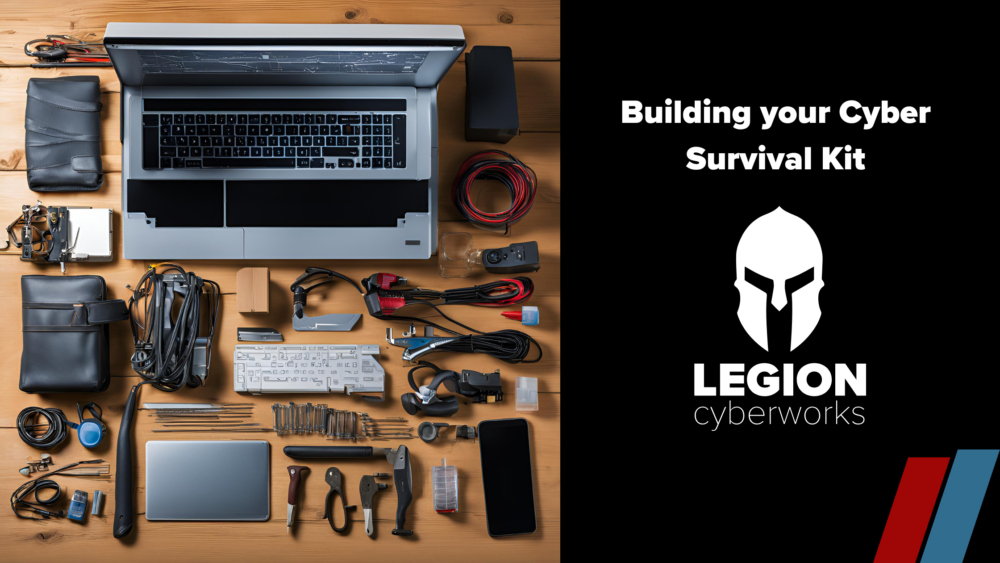Cyber Survival Kit: Protecting Your Business Through Prevention, Detection, and Response
In today’s evolving cyber threat landscape, preparation is not just an option—it’s a critical business need. Without a proper plan, businesses put themselves at risk for all manner of cyberattacks, including ransomware, insider threats, and more. But what makes up a proper plan?
There are three pillars that all businesses must look to when designing their cybersecurity strategies. Namely, prevention, detection, and response. All three are important for building out a strong and intelligent security posture that not only safeguards your organization, but also supports compliance with industry regulations.
Read on to learn more and unpack strategies and tools your team can use to support each of these pillars and build out your cyber survival kit.
Prevention: The First Line of Defense
Prevention is the foundation of a strong cybersecurity posture. By implementing robust preventive measures, businesses can reduce their vulnerability to attacks and secure critical assets.
Key Prevention Tools and Practices:
- Endpoint Detection and Response (EDR): Solutions like Sophos Intercept X offer advanced EDR to block malicious behavior before it can cause harm.
- Firewalls and Intrusion Prevention Systems (IPS): Properly configure firewalls and actively use IPS to block suspicious traffic and prevent unauthorized access.
- Attack Surface Management: Adopt a continuous penetration testing model to proactively and consistently find and fix vulnerabilities and address misconfigurations. Ensure that patches are applied consistently to close security gaps.
- Multi-Factor Authentication (MFA): Strengthen access controls by enforcing MFA for remote access and your critical systems, ensuring that only authorized users can access sensitive data.
- Encryption: Use full-disk encryption to protect sensitive data at rest.
- Secure Access Service Edge (SASE): Leverage SASE to restrict access to cloud environments like Microsoft 365 or Google Workspace, reducing your attack surface.
- Network and Host Segmentation: Segment your network and devices to isolate endpoints and critical systems, preventing malware or attackers from moving laterally.
Backup Strategy:
- 3-2-1 Backup Rule: Always keep at least three copies of your data on two different media types, with one copy stored offsite or in the cloud.
- Test Your Backups: Regularly test backups to ensure quick and reliable recovery when needed.
- Immutable Backups: Ensure that your backups are unchangeable and cannot be deleted or tampered with by attackers.
Employee Training:
- Security Awareness Programs: Conduct frequent phishing simulations and security awareness training to empower your employees against attacks.
- Incident Response Drills: Simulate ransomware incidents and conduct annual assumed breach exercises to ensure your team is well-prepared for real-world scenarios.
Detection: Identify Threats Before They Spread
Early detection of potential threats is essential for limiting the damage caused by a cyberattack. By having effective monitoring and detection tools in place, businesses can catch attacks before they escalate.
Detection Strategies:
- 24/7 Monitoring with Managed Detection and Response (MDR): Employ solutions like Sophos MDR to continuously monitor your systems for threats, providing real-time alerts and rapid response when malicious activity is detected.
- Network and Endpoint Monitoring: Ensure that traffic and endpoints are consistently monitored for any anomalies that may indicate a security breach.
- Incident Response Teams: Use forensic analysis to identify how an attack occurred, trace its origins, and gather evidence for a swift response.
- Attack Simulations: Conduct penetration testing and assumed breach exercises to identify vulnerabilities before they can be exploited.
Response: Rapid Action to Mitigate Damage
Once an attack is detected, your response needs to be immediate and effective. Quick, strategic responses reduce the impact of the attack and help your business recover swiftly.
Response Actions:
- Isolate Affected Systems: Disconnect infected devices from the network to prevent the spread of malware or ransomware.
- Network Segmentation: Use network segmentation to contain the attack and minimize access to critical systems.
- Eradicate the Threat: Ensure that all traces of the adversary are removed from the environment before beginning recovery and restoration procedures.
- System Restoration: Rebuild infected systems using clean backups, ensuring that no remnants of the attack remain.
- Post-Incident Review: Conduct a thorough review of the incident to identify weaknesses and improve future defenses. Perform root cause analysis and update security policies to address vulnerabilities.
Communication During an Attack:
- Internal Communications: Notify key stakeholders and security teams quickly and efficiently, using secure out-of-band communication channels unaffected by the attack. Tools like ArmorText can be used to securely communicate during and immediately following a cyber-attack.
- External Communications: Engage legal counsel, cybersecurity consultants, and, if necessary, law enforcement to ensure a coordinated response. Be transparent with customers and stakeholders to maintain trust.
Cybersecurity Tools to Support Prevention, Detection, and Response
- Endpoint Protection
- Backup Solutions
- MFA Solutions
- Cyber-Attack Simulations
- Network Segmentation
- 24/7 Managed Detection and Response (MDR)
- Security Information and Event Management (SIEM)
- Dark Web Monitoring
Conclusion
Building a strong cybersecurity posture on top of the three pillars of Prevention, Detection, and Response can greatly reduce the risk and impact of cyberattacks. By investing in the right tools, training, and processes, you not only protect your business but also ensure compliance with industry regulations.
Legion Cyberworks is here to help you stay ahead of emerging threats. Contact us to learn how we can support your cybersecurity needs as your trusted partner today.

